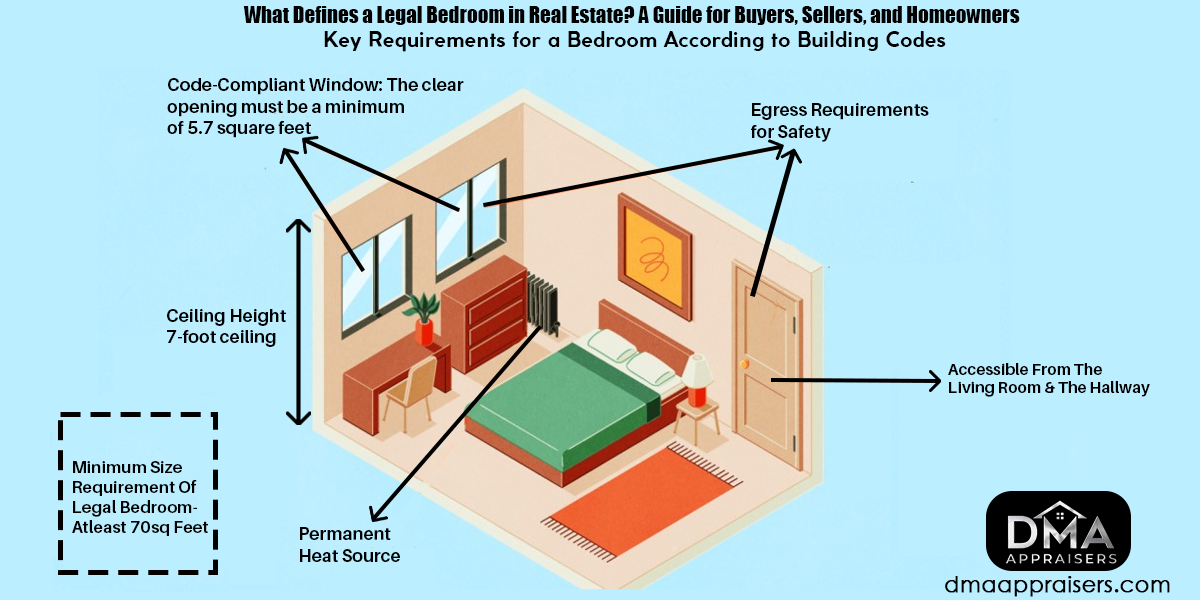What Defines a Legal Bedroom in Real Estate? A Guide for Buyers, Sellers, and Homeowners

When it comes to determining what qualifies as a bedroom, real estate appraisers rely on building codes and local guidelines, as there’s no universal definition. Whether you’re buying, selling, or just curious, understanding what makes a room a “bedroom” can help you avoid confusion and ensure an accurate property appraisal.
Key Requirements for a Bedroom According to Building Codes
In New York State, the Residential Code outlines bedroom requirements for one- and two-family homes, developed by the International Residential Code (IRC). Here’s a breakdown of what counts:
- Minimum Size Requirements
A legal bedroom must be at least 70 square feet in total area, with a minimum of 7 feet in any direction. This ensures the space is functional and livable. - Egress Requirements for Safety
Every bedroom must have at least one safe exit (egress) for emergencies.- Windows must have a minimum opening area of 5.7 square feet, at least 24 inches in height, and 20 inches in width. The sill should be no higher than 44 inches from the floor.
- Doors also qualify as egress points, and having two exits is often recommended for extra safety.
- Accessibility
Bedrooms must be accessible from a main living area, like a hallway or living room. Rooms that can only be accessed through another bedroom typically don’t qualify as separate bedrooms. - Ceiling Height
The ceiling should be at least 7 feet high. For rooms with sloped ceilings, at least 50% of the room must have a 7-foot ceiling, and the minimum height in any part of the required floor area must be 5 feet. - Permanent Heat Source
A bedroom needs a reliable, permanent heat source to ensure it’s suitable for year-round use. -
Does a Bedroom Need a Closet?
While closets are expected in newer homes and master bedrooms, they aren’t required by code for a room to qualify as a bedroom. This flexibility is particularly useful when assessing older homes. -
Can a Basement Room Be a Bedroom?
Yes, but it must meet the same requirements as above, including an exit that leads directly outdoors. Basement bedrooms are often included in the basement description rather than the overall bedroom count, so make sure this is clearly understood. -
Why Accurate Bedroom Count Matters in Real Estate Appraisals
In real estate, bedroom count can significantly impact a home’s value, especially when comparing three or more bedrooms to two-bedroom homes, which are often harder to sell. Real estate appraisers use bedroom count, along with factors like square footage, design, condition, neighborhood, and number of bathrooms, to determine property value. - Tip: If your home has a septic tank, remember that its size is based on the number of bedrooms, so accurate bedroom count is essential.
- For buyers, sellers, and homeowners alike, understanding these criteria is essential to navigating the real estate market and ensuring accurate property evaluations. If you’re unsure, a certified real estate appraiser can provide the expertise needed to confirm if your rooms qualify as true bedrooms under IRC and local standards.

